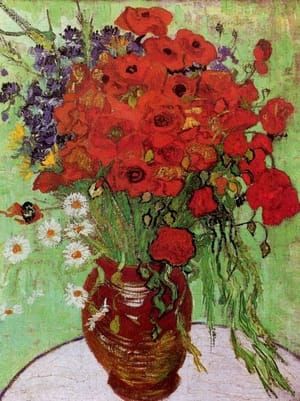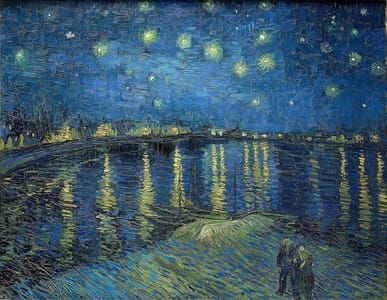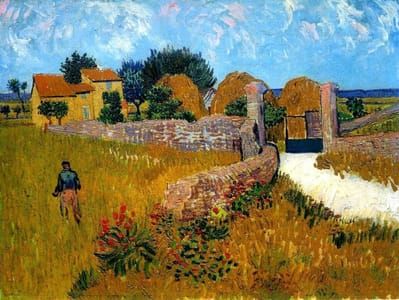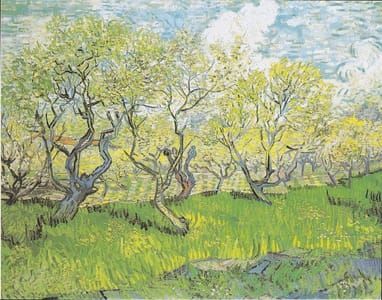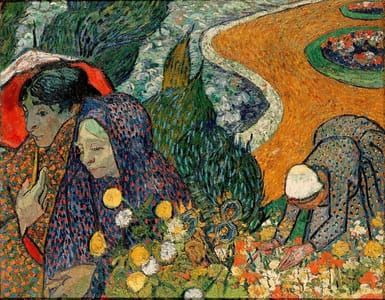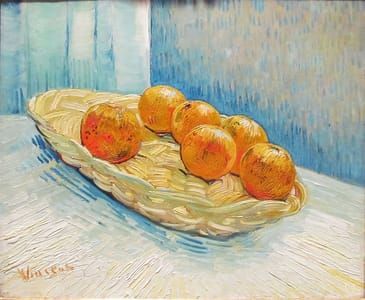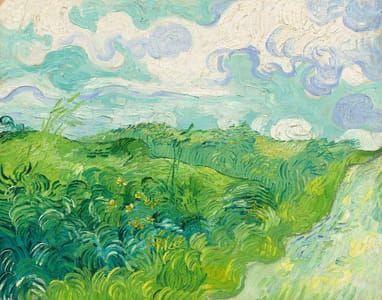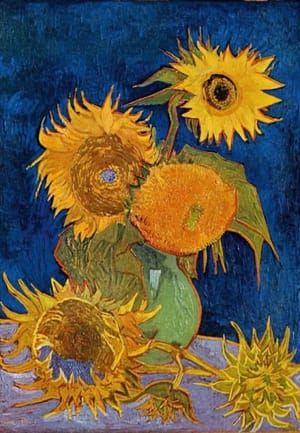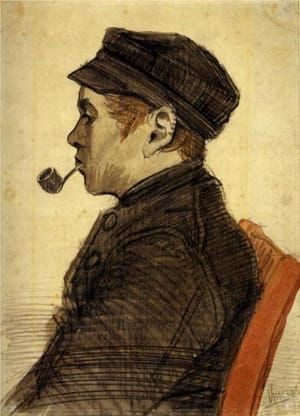

Coleus Plant in a Flower Pot, 1886
Vincent van Gogh
In 1885 Van Gogh was painting portraits of peasants and completed his first major work, The Potato Eaters.
When he moved to Paris, his brother Theo encouraged Vincent to paint brighter, more colorful paintings, and his flower still lifes from this period, in 1886, reflect this. They are still predominantly dark, dominated by earth tones, but the flowers are becoming more vibrant and showing more color. Paintings like Glass with Roses and Vase with Carnations show flowers set against a dark background, only the flowers with any sense of bright colour. Roses shine in yellow, carnations bloom bright white, red, and yellow, contrasting against the dark backdrop.
Some paintings from this period show vases with a few small blooms, while others, like Vase with Gladioli and Lilac and Poppy Flowers show vases overflowing with arrangements. Van Gogh had been studying the still life paintings made famous by master Flemish painters. This period marks a turning point in his artistic career where he is moving away from the darker paintings he was producing in the Netherlands and becoming interested in the more colorful works of the Impressionists. He was developing his masterful use of color theory “seeking oppositions of blue with orange, red and green, yellow and violet.”
(http://poulwebb.blogspot.nl/2012/12/vincent-van-gogh-flowers-part-1.html)
Uploaded on Nov 7, 2017 by Suzan Hamer
Vincent van Gogh
artistArthur
Wait what?
